Artur
Grabowski Poland,
in his action
combined two types of performance: classic psycho-physical act with a
commentary on the current situation. Such a combination resulted in a gripping,
dynamic activity creating at the same time a vastly understandable non-artistic
discourse. Some universally and individually symbolic objects appeared in the
performance. First of all –especially praised by the artist, a golden axe,
which held the plot together. The performance started with a display of common
symbolic of the bread, the cross and white-red polish national flag all worn by
the artist in a very unusual manner (bread for shoes, flag in the fly and the
cross hammered to the chest). Using the formidable golden axe the artist cut
legs of the chair underneath him, consequently he fell and then proceeded with
the final activity of igniting the remains of the chair along with his own
clothes. Hence the artist jumped on the
table covered with the Polish flag and cutting the table’s legs he fell again.
- zrobił performance łączący dwa typy performance -
"klasykę" działania psycho-fizycznego i komentarz rzeczywistości aktualnej.
Pomieszanie tych dwóch podejść dało efekt niezwykle dynamicznego działania
trzymającego w napięciu, a jednocześnie budującego dyskurs pozaartystyczny
zrozumiały dla publiczności.
W grze było kilka przedmiotów symbolicznych, o
symbolice uniwersalnej i nadanej im przez artystę. Po pierwsze - złota siekiera,
której artysta przyznał rolę szczególną, a która, niczym strzelba w dramacie
Czechowa spajała wątki narracyjne. Narracja zaczeła się od chleba, krzyża i
flagi b.-cz.(symbolika powszechna) noszonymi w szczególny sposób przez artystę
(chleb jak buty, flaga w rozporku a krzyż na gwoździu wbitym w pierś). Artysta
siedząc na stołku, złotą siekierą podciął jego nogi, upadł, po czym podpalił
resztki mebla i swojego ubrania. Następnie przeniósł się na stół przykryty flagą
i podciął jego nogi, upadając po raz wtóry.
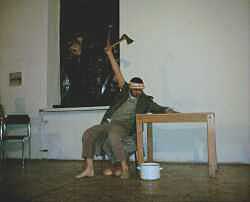
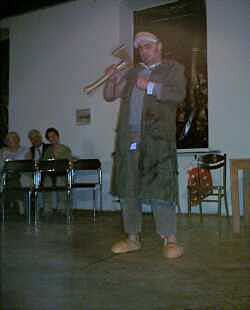
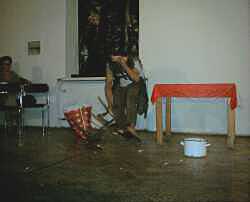
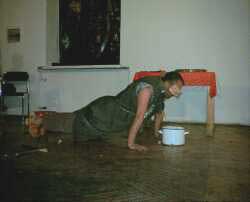
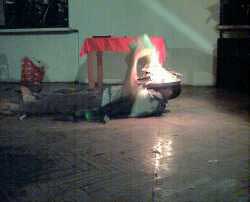
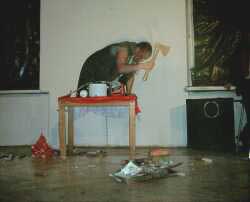
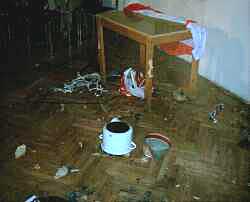
< < <
back
< < <
www.spam.art.pl






